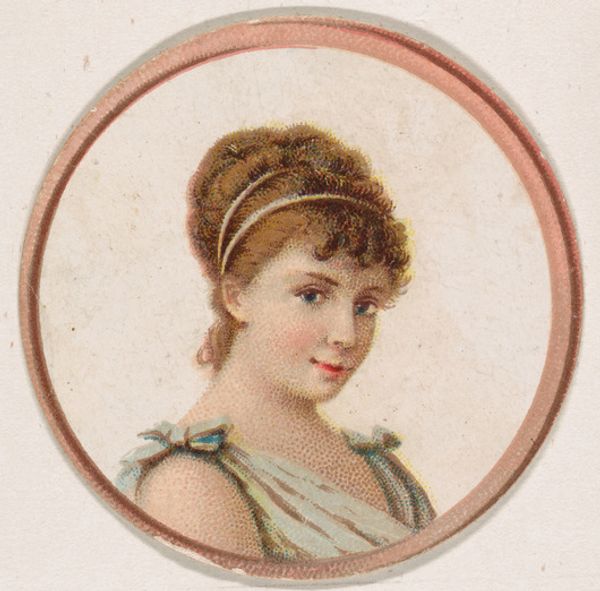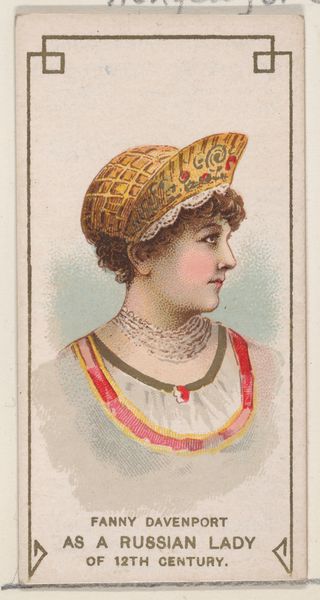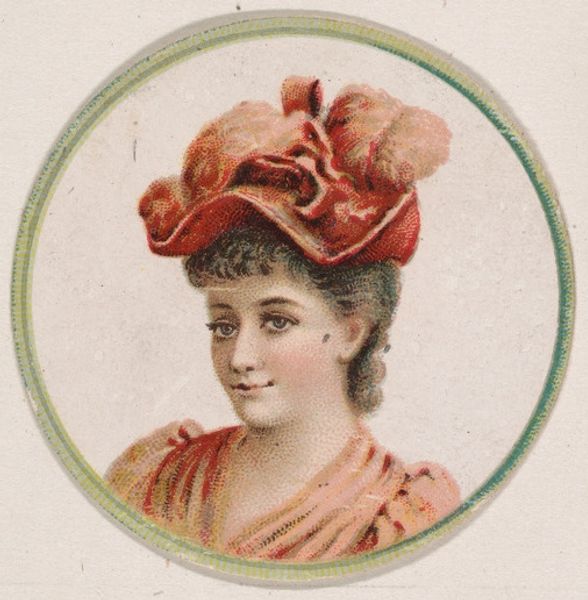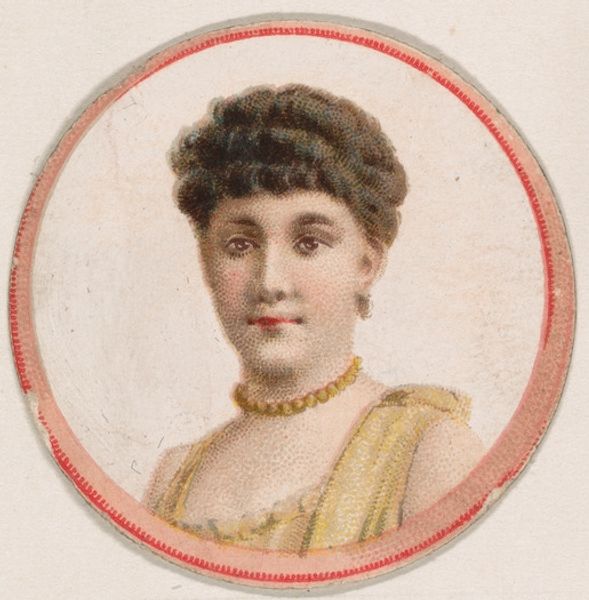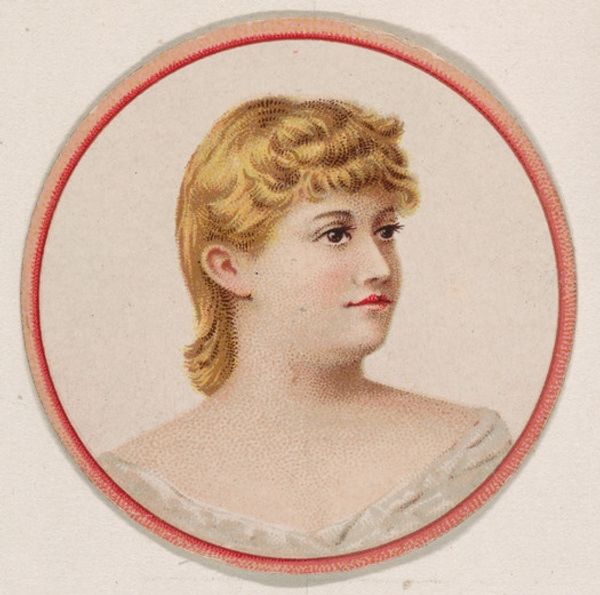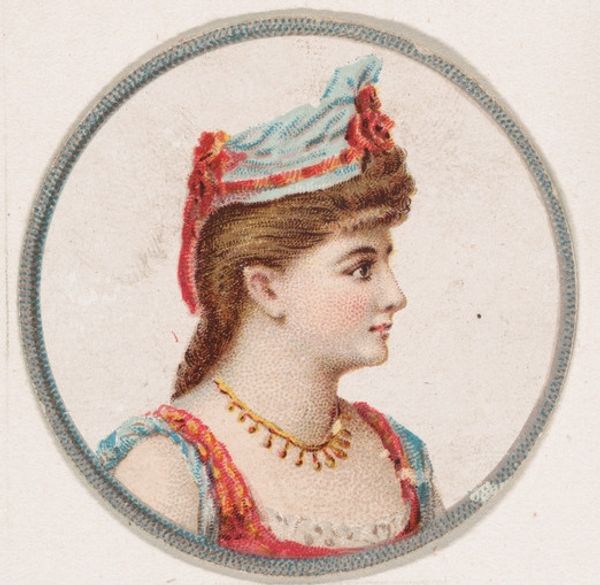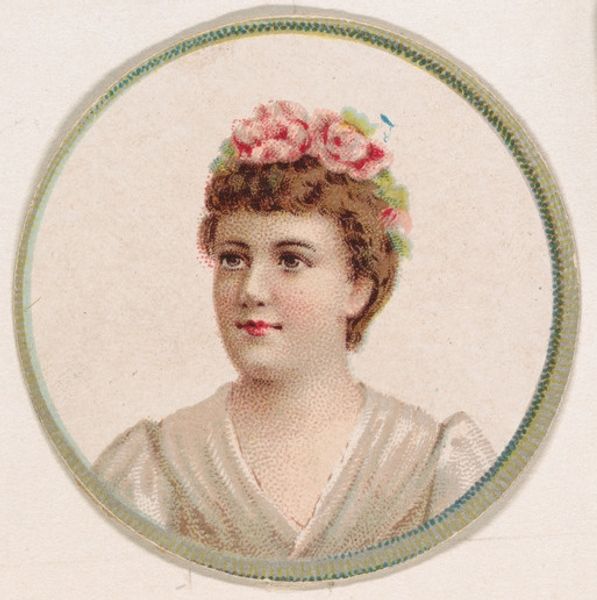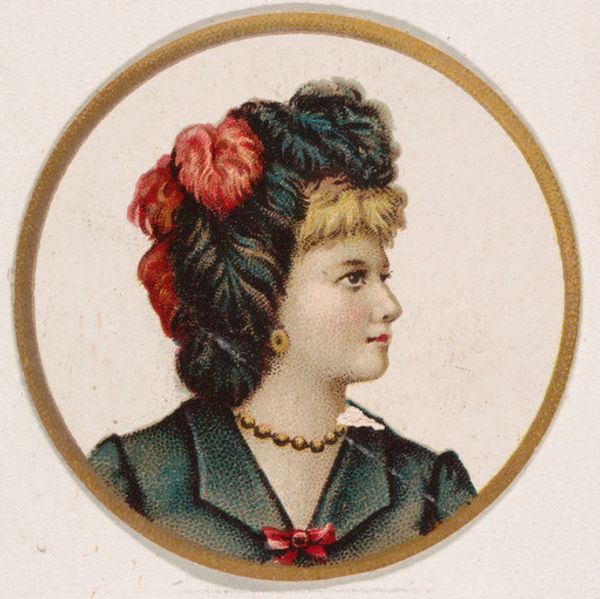
Portrait of woman, from the Novelties series (N228, Type 2) issued by Kinney Bros. 1889
0:00
0:00
drawing, print
#
portrait
#
drawing
# print
#
academic-art
#
portrait art
#
watercolor
#
profile
#
realism
Dimensions: Sheet (Round): 1 9/16 × 1 9/16 in. (4 × 4 cm)
Copyright: Public Domain
Curator: Up next, we have "Portrait of woman, from the Novelties series (N228, Type 2) issued by Kinney Bros.," dating back to 1889. It’s currently held here at the Metropolitan Museum of Art. Editor: It’s remarkable. The pale colors and circular format give it an ethereal, almost dreamlike quality, though the style also feels very straightforward and proper. Curator: Exactly. This was originally a print that accompanied tobacco products, offering insights into the cultural norms and aspirations of the time. Consider it alongside the rise of mass media. These “novelties” reflect the industrialization of leisure and taste, distributing images of ideal womanhood alongside consumer goods. Editor: Fascinating how such a seemingly simple image encapsulates so much! The woman's profile, the carefully coiffed hair, even the double strand of pearls all speak to a specific cultural archetype: restrained beauty, status, and aspiration. This visual language reinforces ideals within that culture. Curator: And that the company chose a watercolor-like design—while this is technically a print—contributes to the idea of sophistication, perhaps contrasting with the association with tobacco. What this illustrates is how companies strategically engaged in constructing an image. Editor: Precisely. Watercolors, even the imitation of them, often symbolized refinement and feminine accomplishment during that period. They chose this symbol very carefully, not to present "realism", but constructed values around their brand! Curator: It's a reminder that what seems like simple portraiture is so frequently loaded with deliberate messaging about society’s desired image, making these pieces of "ephemera" critical documents about gender and commerce in the late 19th century. Editor: Yes, seeing the woman as both an individual and an embodiment of larger ideals helps to expose these underlying currents. It changes how you view consumer marketing in art as a whole, which makes me like it all the more.
Comments
No comments
Be the first to comment and join the conversation on the ultimate creative platform.


